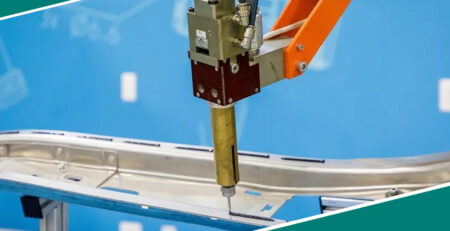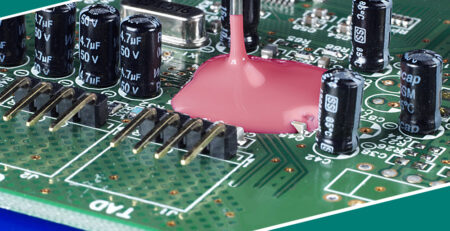The Importance of Lithium Battery Fire Suppression Systems: Ensuring Safety in a Battery-Driven World
The Importance of Lithium Battery Fire Suppression Systems: Ensuring Safety in a Battery-Driven World
The world is increasingly shifting towards electric and battery-powered solutions, with lithium-ion batteries at the forefront of this transition. Lithium batteries are omnipresent in our daily lives, from smartphones and electric vehicles to renewable energy storage systems. However, while these batteries provide remarkable efficiency and power, they pose a significant fire risk under certain conditions. A malfunction, short circuit, or external damage to a lithium-ion battery can lead to dangerous fires or even explosions. Lithium battery fire suppression systems have become a critical safety measure to mitigate such risks. This article explores the importance of these fire suppression systems, the different types available, and how they contribute to preventing devastating accidents.
 Understanding the Risks of Lithium Battery Fires
Understanding the Risks of Lithium Battery Fires
Before diving into the specifics of fire suppression systems, it’s essential to understand the risks posed by lithium-ion batteries. These batteries are known for their high energy density and ability to charge quickly, but their chemical composition makes them highly volatile under certain circumstances.
- Thermal Runaway:A significant risk is thermal runaway, which occurs when a battery cell overheats and causes a chain reaction that leads to further overheating, smoke, or fire. It can happen due to overcharging, short circuits, or physical damage.
- Flammable Electrolyte:The electrolyte in lithium-ion batteries is highly combustible, making it easier for a fire to spread once ignited.
- Difficult to Extinguish: Lithium-ion battery fires are challenging to extinguish, especially once they escalate into thermal runaway. Traditional fire suppression methods often fail to stop the spread of these fires effectively.
- Explosion Risk:Lithium battery fires can cause explosions in severe cases, leading to a far more dangerous scenario.
Given these risks, it’s clear why investing in fire suppression systems is crucial in environments that handle or store large quantities of lithium-ion batteries.
What is a Lithium Battery Fire Suppression System?
A lithium battery fire suppression system is designed to detect and suppress fires arising from lithium-ion battery failures or malfunctions. These systems are tailored to combat the unique challenges of lithium battery fires, such as high heat generation, rapid escalation, and the difficulty in extinguishing fires once they start.
Unlike conventional fire suppression systems, which rely on sprinklers or extinguishing agents like water or foam, lithium battery fire suppression systems utilize cutting-edge technologies and chemicals that specifically target the unique characteristics of lithium fires.
Types of Lithium Battery Fire Suppression Systems
Various fire suppression systems are available, each with its own advantages and best-use scenarios. These systems differ in terms of the extinguishing agent used, the speed of activation, and the level of automation involved.
Active Fire Suppression Systems
Active fire suppression systems automatically detect and suppress fires when they are detected. They are designed to respond quickly and efficiently to prevent fires from escalating. These systems typically involve a combination of sensors, alarms, and suppression agents.
- Water Mist Systems:Water mist can be an effective suppression agent for lithium-ion battery fires. It works by rapidly cooling the area and reducing the oxygen level around the fire. However, this method requires precise control to avoid damaging the batteries or causing short circuits.
- CO2 Systems:Carbon dioxide (CO2) fire suppression systems are effective because CO2 displaces oxygen, thus suffocating the fire. However, CO2 systems are most effective in enclosed spaces and can be hazardous to personnel in the area.
- Clean Agent Systems: Clean agents, such as FM-200 or Novec 1230, are often used in lithium battery fire suppression. These agents suppress the fire without leaving residues or damaging equipment. They are instrumental in settings like data centers, where sensitive electronics are present.
- Powder-Based Suppression Systems:Specialized powder-based agents effectively extinguish lithium battery fires. They work by interrupting the fire’s chemical reactions, helping to stop it. This method is often used in industrial and heavy-duty environments.
Passive Fire Suppression Systems
Passive fire suppression systems are built into the structure or design of the facility or equipment. They do not require active intervention once a fire starts. These preventative systems aim to reduce the likelihood of a fire igniting or spreading.
- Thermal Barriers:These physical barriers isolate high-risk components (like lithium-ion batteries) from other parts of a facility. They help slow the spread of heat and fire in an emergency.
- Fire-Resistant Enclosures:Battery enclosures made from fire-resistant materials can prevent fires from escaping the battery’s immediate vicinity. They are often used in electric vehicle battery compartments and energy storage systems.
- Ventilation Systems:Proper ventilation systems can help dissipate the heat generated by lithium batteries, especially during overcharging or short circuits. Adequate airflow can also reduce the chances of a thermal runaway event, though it is not a complete solution.
Hybrid Fire Suppression Systems
Hybrid fire suppression systems combine active and passive methods to offer comprehensive fire protection. They are designed to provide rapid detection, suppression, and containment of lithium battery fires.
- Integrated Gas and Water Systems:These systems combine the benefits of gas-based suppression, like CO2 or clean agents, with water mist or sprinklers. This hybrid approach helps quickly extinguish the fire while minimizing re-ignition risk.
- Automated Fire Extinguishing and Ventilation:Hybrid systems may incorporate automated extinguishing agents with real-time monitoring and ventilation control, ensuring the fire is suppressed while maintaining safe air quality.
Key Considerations When Choosing a Lithium Battery Fire Suppression System
Choosing the right lithium battery fire suppression system is critical to ensuring the safety of both personnel and assets. Here are some key factors to consider:
Type of Facility and Battery Size
- The scale and type of facility (e.g., a data center, EV charging station, or energy storage facility) will influence the choice of fire suppression system. More extensive facilities may require hybrid systems that offer active and passive protection, while smaller facilities might benefit from simpler, automatic suppression systems.
Battery Chemistry and Configuration
- Lithium batteries can come in different chemistries, such as LFP (Lithium Iron Phosphate), NCM (Nickel Cobalt Manganese), and others, each with varying fire risks. Selecting a suppression system compatible with the specific chemistry and configuration of the battery being used is essential.
Response Time
- Faster response times are crucial in preventing a fire from escalating. Systems that detect a fire within seconds and immediately deploy an agent (whether gas, powder, or water mist) are more effective in mitigating damage.
Environmental and Health Impact
- Some fire suppression agents can harm the environment and human health. When choosing a suppression system, it’s essential to ensure that the agent used is effective in suppressing fires and safe for the surrounding environment and personnel.
Maintenance and Reliability
- A fire suppression system is only effective if it is adequately maintained. Choose a system that offers easy maintenance and ensures reliable performance in an emergency.
How Lithium Battery Fire Suppression Systems Improve Safety
Lithium battery fires can have devastating consequences, including loss of life, property damage, and environmental harm. A well-designed fire suppression system mitigates these risks by:
- Preventing Fire Spread:Lithium battery fires can escalate quickly, but suppression systems can stop fires from spreading to surrounding equipment, reducing the overall damage.
- Minimizing Downtime:In commercial settings, downtime due to fire-related accidents can result in financial losses. Fire suppression systems help reduce these disruptions.
- Protecting Personnel:Ensuring fire suppression systems are in place helps protect workers and first responders from exposure to harmful chemicals, smoke, and flames.
- Enhancing Compliance:In some industries, regulatory standards require implementing fire suppression systems for lithium-ion batteries. Adhering to these regulations ensures safety and legal compliance.
 Conclusion
Conclusion
As the use of lithium-ion batteries continues to expand across various industries, the risks associated with their malfunction or failure also grow. A lithium battery fire suppression system is essential for ensuring safety in environments that handle or store these batteries. By offering rapid detection, effective suppression, and minimizing the spread of fires, these systems help protect both human lives and valuable assets. With the variety of systems available, ranging from active suppression to passive containment, it’s essential to select the right solution based on each facility’s specific needs and risks. As technology advances and the importance of battery-driven solutions increases, so does the need for advanced, reliable fire suppression methods to keep these innovations safe.
For more about a complete guide to the importance of lithium battery fire suppression systems: ensuring safety in a battery-driven world, you can pay a visit to Deepmaterial at https://www.adhesivesmanufacturer.com/ for more info.












